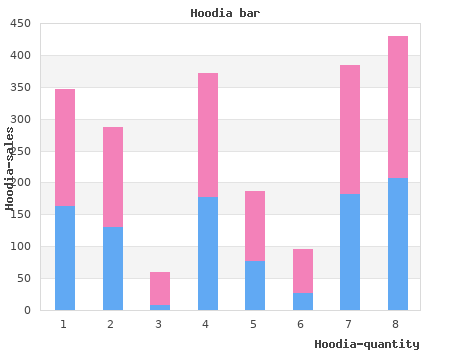By O. Irhabar. Argosy University.
There is little scientifically conducted research regarding the risks and benefits of treating chronic pain in patients with sub- stance abuse disorders to guide the practitioner [15 buy generic hoodia 30caps online, 16] generic 30caps hoodia with mastercard. A small, mostly conceptual body of work on the ethics of treating chronic pain in patients with a current diagnosis and history of a SUD has been pub- lished. A literature search of the databases (Bioethics Line, PsychInfo and Medline) identified 5 articles dealing with the clinical or ethical issues of treat- ing chronic pain in patients with a history of addiction or current SUD and fewer than 10 articles dealing with the ethics of nonmalignant chronic pain treatment [17–20]. One author has called this neglect of the problem of pain in the bioethics literature ‘a legacy of silence’. A Common Language The lack of clear definition of many of the terms involved in this contro- versy contributes to the disagreements. The terms ‘addiction, dependence, toler- ance, and abuse’ have been widely misunderstood and misapplied even among health professionals. The American Academy of Pain Medicine, American Pain Society and American Society of Addiction Medicine produced a consen- sus document containing definitions related to the use of opioids for treating pain. The interpretation of these key terms carries ethical significance. Ethical principles can help frame the clinical import of the key terms employed in scholarly and lay discussions of addiction (table 1). A shared terminology enables all professionals to educate the public about the real nature of addiction and chronic pain diagnoses and their associated pharmacological treatments. The Core Ethical Conflict in Chronic Pain Treatment More than 2000 years ago, Hippocrates succinctly stated the core ethical conflict involved in the treatment of chronic pain in persons with SUD. Ethical acceptability of treating chronic pain Accepted Growing consensus Controversial Malignant pain Chronic nonmalignant pain Chronic nonmalignant pain in addiction use my power to help the sick to the best of my ability and judgment; I will abstain from harming or wronging any man by it’. Ethicists call these two obligations beneficence and nonmaleficence, literally the obligation to do good and not to do harm. Modern codes of ethics continue to regard these ancient principles as two of the physician’s most basic professional obligations.

The first detailed descriptions date back to Lobstein in 1835 and Vrolik in 1849 [114] purchase 30 caps hoodia amex. Classification cheap hoodia 30caps amex, occurrence The condition was first classified by Looser in the year 1906. He made a distinction between an osteogenesis im- perfecta congenita, in which multiple fractures are already present at birth, and a tarda form, in which the fractures occur later on. The first form was subsequently referred to as the Vrolik type, and the second form as the Lobstein ⊡ Fig. The current classification, based on genetic factors, imperfecta and bowing of the long bones after suffering multiple frac- subdivides the condition into five groups (⊡ Table 4. This corresponds problems, in 1992 Hanscom proposed a radiological to type E or type F according to Hanscom. Multiple classification, based on 64 cases, that takes better account fractures even occur during the delivery process. The commonest form is type I, type II deformities occur in varying degrees in the other types is less common, while types III–V are extremely rare. The classification according to Hanscom helps us Etiology, pathogenesis assess the severity of the condition. In Hanscom type A the The underlying problem in osteogenesis imperfecta is the vertebral bodies show normal contours, and the extremi- impaired maturation of type I collagen fibers from the ties, particularly the legs, are only slightly bowed. While osteoblast activity is brisk, the cells there is clear bowing of the upper and lower legs, with are incapable of forming normal collagen. The vertebral bodies are biconcave, and links« play an important role in the maturation of the scoliosis and/or kyphosis not infrequently develops.

There is no rebound effect and skin grafts heal uneventfully without the need for any other intervention (Fig generic 30caps hoodia otc. Split-skin grafts are normally used effective 30caps hoodia, but small full-thickness skin grafts may be necessary in specific areas (lips, eyelids, nose, hand/fingers, toes, and genita- lia). In general, medium-thickness split-skin autografts are used (14–16/1000 inch), which provide a good color and texture to the grafted site. As soon as the burn wound has been excised, the defect is measured and a drawing that resembles the excised burn wound is created on the donor site. It must be taken into account that skin grafts will shrink after harvesting due to skin relaxation. Therefore, it is advised to make the drawing 10–15% bigger than FIGURE 4 Meshed skin grafts should be avoided in minor and medium-sized (up to 40% TBSA) burns. The scars and mesh pattern are permanent marks and re- minders of the injury. After complete hemostasis has been achieved, sheet skin grafts can be applied to the wound. Donor sites are infiltrated with normal saline with epinephrine 1/200,000. Other useful techniques include the Pipkin’s syringe and infiltration through a pressurized system (a manometer commonly used for arterial lines will suffice) (Fig. Enough tension must be obtained to immobilize the skin and produce an even surface that avoids bony structures. Although skin grafts can be taken with a hand der- matome, thickness is not as predictable as with powered dermatomes. Hand der- matomes leave also an uneven contour around the donor site that will show in the postoperative result. Zimmer and Padgett air- or electrically powered der- matomes can be used. Liquid paraffin is normally used to moisten the skin surface but it is the author’s prefer- ence to use normal saline, which provides better friction.

If discount hoodia 30 caps overnight delivery, after further discussion generic hoodia 30caps line, this is still the decision of the patient, the time for complete wound closure and the prospect for severe scarring should be made clear, and this should be well documented. Induction of Anesthesia and Preparation When the patient arrives at the operating room, several things should be in place. First, the ambient temperature of the room should be at least 30 C (86 F) because the patient will be mostly exposed for the procedure and will not be able to regulate core body temperature. In fact, it may be necessary to increase the temper- ature further should the patient get cold. Once the patient arrives, anesthesia should be induced with endotracheal intubation. In our practice, we almost always accom- plish intubation by fiberoptic means through the nose. This allows for decreased vulnerability of the airway and for a fiberoptic examination of the upper and lower airways in patients with suspected inhalation injury. Attention then should be turned to placement of intravenous lines and invasive monitors such as arterial lines. We generally, perform operations with a multilumen subclavian venous catheter with one other large-bore venous line. We also place a catheter in the femoral artery to measure blood pressure continuously during the operation and to obtain arterial blood for gas analysis; again, this may not be necessary in cases of smaller burns. An oxygen saturation monitor and continuous electrocardiogram leads should also be placed. We have found that alligator clips attached to staples inserted into the skin work well as electrocardiographic leads instead of adhesive pads. Once the monitors are in place and anesthesia induced, the patient can be prepared for the operation. While the patient is in the supine position, the head The Major Burn 237 should be shaved if the scalp is burned or if the scalp will be used as a donor site. The skin for the donor site area as well as the burn wound should then be prepared by gentle scrubbing and washing with an antiseptic solution such as Betadine or chlorhexidine solu- tion. For burns over 20% of the body surface area, this will include most of the body; therefore, in these cases we will prepare the skin of the whole body in order to make all the donor sites available.

In our burn unit it is performed in the unit’s surgery room with the collaboration of an anaesthetist and the necessary nursing staff purchase hoodia 30caps online. The technique involves making longitudinal incisions in segments with inelastic circumferential burns buy 30 caps hoodia amex, usually of full thickness. The incisions, all of which are interconnected, are made on the lateral aspect of the digits, the dorsum of the hand, and at the level of the forearm and the arm on their dorsal and volar aspects. With escharotomies at the level of the articular folds, the incisions should follow a sinuous path, which avoids later scars perpendicular to the folds and retraction. In the case of high-voltage electrical burns with suspected compartment syndrome, the incisions should include the eschar and the deep fascia of each of the affected muscle compartments, beyond the cutaneous burn lesion. With circumferential burns of the wrist and with severe electrical burns, we suggest performing a carpal retinaculotomy to release the median nerve at the level of this anatomical gap. It is vital to maintain careful hemostasis using ligatures and/or an elec- troscalpel after making the drainage incisions. Otherwise, it will often be neces- sary to establish hemostasis again later on in the treatment of the wound. After performing the escharotomy of the upper extremity, we then generally use a loose elastic suture with a vessel-loop in a fixed zigzag pattern, using clips at the borders of the incision. Several days after the decompression escharotomy, when the danger of compartment syndrome has passed, the ends of the elastic sutures are subjected to progressive traction, which will approximate the edges of the escharotomy. This favors a progressive closure of the exposed surface and decreases subsequent scarring as a result of decompression. Justification The clinical justifications for an early escharectomy have been described in other chapters. There- fore, early escharectomy of burned hands on a patient with extensive, life-threat- ening burns may not be a priority from a systemic point of view. However, from a functional standpoint, the hands, as well as the face, are of high priority since they help determine the quality of life for patients who survive. We, therefore, believe that surgical treatment in the form of an escharec- tomy of deep partial-thickness burns and full-thickness burns of the hands should be undertaken as soon as possible.




